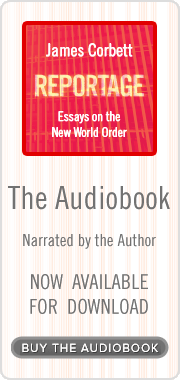by James Corbett
grtv.ca
30 November, 2011
Documents released under the Access to Information Act in Canada earlier this month reveal what Canadian activists have long known: that a massive RCMP-led intelligence dragnet worked for 18 months to infiltrate, surveil, and ultimately arrest activists across the country for their participation in Vancouver Olympic and Toronto G20 activism.
The operation involved the formation of a Joint Intelligence Group that the RCMP itself said in an internal document was “likely the largest [such group] ever assembled in Canada.” And after 18 months of operation, this dragnet–part of the one billion dollars that the Canadian taxpayer was forced to pay out for security operations around the G8 and G20 meetings in Toronto last year–resulted in the arrest of just 17 people, with six of the accused pleading guilty to charges of counseling mischief. 11 of the 17 have had their charges dropped altogether.
The documents reveal the organizational structure and the inner workings of the intelligence task force, which employed over 500 federal, provincial and municipal police and began working as far back as mid-2009, before the conference was even scheduled. An early threat assessment document identifies the types of people police believed would be involved in protesting the G20 summit, the annual meeting of political leaders from the world’s top economies:
“The 2010 G8 Summit in Huntsville, as with most venues of this type, will likely be subject to actions taken by criminal extremists motivated by a variety of radical ideologies,” the report reads.
“These ideologies may include variants of anarchism, anarcho-syndicalism, nihilism, socialism, and/or communism.[…]The important commonality is that these ideologies[…]place these individuals and/or organizations at odds with the status quo and the current distribution of power in society.”
The report goes on to conclude that “criminal activity” is often embraced by such groups, and that they pose “serious public safety challenges.”
Other documents outline the different types of undercover agents, event monitors and surveillance teams deployed by the group, the covert operations undertaken by these agents, and the organizational structure of the different groups involved.
Officers involved in the trial of the 17 people who were the ultimate target of this vast intelligence operation testified that they had not only infiltrated the group, but took part in and even encouraged acts of vandalism amongst the groups they had infiltrated.
These reports lends further credence to the idea that the iconic burning of the police car, the most infamous scene from the Toronto G20, was not an inexplicable failure of the $1 billion security operation, but in fact itself a carefully choreographed event that provided police forces with carte blanche to crack down on all protests the next day:
The almost farcical nature of the case and what it has revealed about the behind-the-scenes security precautions for the Toronto G20 belie the very real abuses of civil rights that took place in the name of that security, including numerous documented violations by police officials of the Canadian Charter of Rights and Freedoms:
Earlier this week I had the chance to talk to Dan Dicks, an independent journalist who documented many of these abuses in his film, Into The Fire, about what these recent documents reveal about the police state in Canada.
Indeed, the G20 violations were just the latest in an ongoing series of scandals that have long tarnished the reputation of the RCMP and of Canadian policing in general.
In 1977, the Trudeau government assembled a royal commission of inquiry to investigate numerous cases of illegal conduct committed by the RCMP in the 1970s. The commission, which released its final report in 1981, concluded that the RCMP had repeatedly and flagrantly violated the law in its pursuit of domestic intelligence missions, including breaking into, stealing documents from and opening the mail of political parties, burning down a barn in Quebec, forging documents and conducting illegal surveillance.
As a result of the commission, the national security function was removed from the mandate of the RCMP and assigned to a new civilian spy agency, CSIS, which was formed in 1984 and immediately hit by scandal when it failed to prevent the bombing of Air India Flight 182 despite having a mole inside the group that committed the bombing. CSIS was later reprimanded for having destroyed its own wiretap evidence in the case.
In 2007, undercover Quebec provincial police infiltrated the peaceful protests at the Montebello SPP Summit. The masked undercover officers were spotted with rocks in their hand approaching the police line, but when called out by one of the protesters, were then “arrested” by the police and taken away. Within days, the government was forced to admit that the men had indeed been undercover police officers.
As more revelations continue to emerge from the scandalous security operations at the Toronto G20, activists who have long warned of an encroaching police state only continue to be proven correct. And as political protest becomes more commonplace in the light of the persistent crisis of the current global financial order, political pundits of all stripes are bracing for more such abuses and violations of the basic rights of Canadians.
Now as these documents shed even more light on a long history of illegal conduct by Canadian police services, many Canadians are asking whether the country has in fact become a police state.








This is so relevant today in light of the massive demonstrations against covid pass. I’d like to think most protestors are aware of this agents.